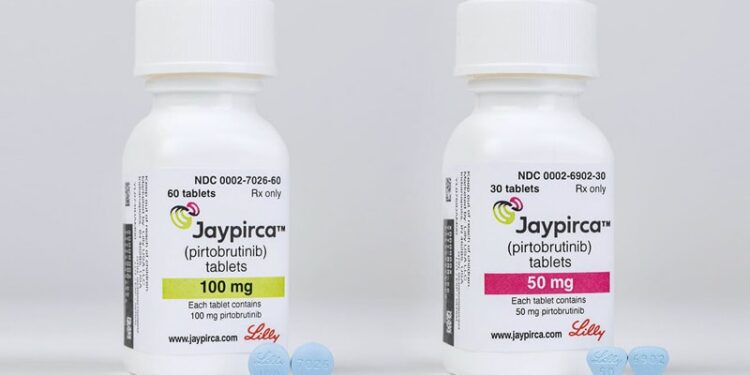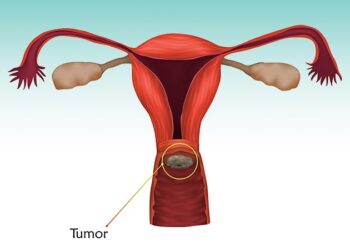In just over a year since its US Food and Drug Administration (FDA) approval, pirtobrutinib (Jayprica) has become a standard therapy for patients with chronic lymphocytic leukemia (CLL) who have developed resistance to other treatments.
“Pirtobrutinib has added an entire line of therapy for patients with progression on covalent BTK [Bruton’s tyrosine kinase] inhibitors and venetoclax,” said Hematologist-Oncologist Jennifer R. Brown, MD, PhD, professor of medicine at Harvard Medical School and director of the CLL Center at Dana-Farber Cancer Institute in Boston in an interview. “It’s availability together with its ease of use and safety has been transformative.”
Now, as new data point toward possible expansions of pirtobrutinib’s indications in CLL, here are questions and answers about the landmark drug.
What is pirtobrutinib, and why is it needed?
Pirtobrutinib is one of several kinds of BTK inhibitors. As Hematologist/Oncologist and CLL specialist Lindsey E. Roeker, MD, of Memorial Sloan Kettering Cancer Center, New York City, explained in a 2024 Blood commentary, these inhibitors “block B-cell receptor signaling to impair survival and growth of CLL cells.”
Covalent forms of these drugs such as ibrutinib (Imbruvica) revolutionized CLL care. But many patients eventually develop resistance.
“As many patients are living longer with CLL, we are seeing increasingly number of patients who have failed both a covalent Bruton’s tyrosine kinase inhibitor and venetoclax-based therapy. Alternative therapies are needed,” said Nicole Lamanna, MD, professor of medicine and director of the CLL Program at Herbert Irving Comprehensive Cancer Center, New York-Presbyterian Hospital, and Columbia University Irving Medical Center, New York City, in an interview.
Enter pirtobrutinib, which is noncovalent and inhibits BTK in different ways than its sister medications.
“This is especially helpful for patients who developed a mutation that prevents covalent inhibitors from properly binding” to BTK, said Deborah M. Stephens, DO, professor of medicine and director of CLL at Lineberger Comprehensive Cancer Center, University of North Carolina at Chapel Hill, in an interview.
“The FDA approved the drug in January 2023 for patients with relapsed or refractory mantle cell lymphoma who failed at least two lines of systemic therapy, including a Bruton’s tyrosine kinase inhibitor.” The CLL/SLL (small lymphocytic lymphoma) approval came nearly a year later for adult patients who have received at least two prior lines of therapy including a BTK inhibitor and a B-cell lymphoma 2 inhibitor such as venetoclax.
How do patients fare?
Progression-free survival is about 16-20 months for patients who take pirtobrutinib following progression on covalent BTK inhibitors and venetoclax, Lamanna said.
“It is important to plan for the next line of therapy” following, she said. “Patients will need alternative therapy such as other clinical trials or CART [chimeric antigen receptor T-cell therapy].”
Julie M. Vose, MD, MBA, chair of hematology/oncology at the University of Nebraska Medical Center, Omaha, Nebraska, agreed about the importance of anticipating treatment failure with pirtobrutinib. “You need to have the next plan for therapy thought out,” she said in an interview.
What do we know about side effects?
“Pirtobrutinib is generally well tolerated, with low rates of discontinuation due to drug-related toxicity,” Lamanna said.
As with other BTK inhibitors, she said, adverse effects of pirtobrutinib can include cardiac arrhythmias such as atrial fibrillation, hypertension, increased bruising/bleeding, and infection. According to her, other side effects can include rash, gastrointestinal side effects such as nausea/diarrhea, fatigue, and arthralgias/myalgias.
Stephens said the low side-effect profile means the drug “can be used in older patients and those with multiple comorbidities who may have previously not had viable treatment options.”
In these patients, she said, the progression-free survival period of a little over a year “often comes with a good quality of life with minimal side effects.”
How much does pirtobrutinib cost?
The recommended dose of pirtobrutinib is 200 mg orally per day. According to Goodrx.com, a monthly supply retails for about $23,000, but the cost can be reduced to $9999 with a coupon. In interviews, several hematologists said they haven’t encountered insurance hassles regarding the drug.
“There are no problems with insurance coverage if pirtobrutinib is used per its indication of third-line or higher treatment,” Stephens said.
What’s happening on the research front?
Researchers are exploring pirtobrutinib as an earlier therapy in CLL.
The 2024 BRUIN CLl-321 study randomly assigned 238 patients with CLL/SLL to idelalisib (Zydelig) plus rituximab or bendamustine (Bendeka, Treanda) plus rituximab. At a median follow-up of 6.1 months, progression-free survival was higher in the pirtobrutinib (hazard ratio, 0.58; 95% CI, 0.38-0.89; P = .01). Just over 5% of patients in the pirtobrutinib group discontinued treatment due to treatment-related adverse effects.
The other two treatments “are less-used regimens and outdated comparators, but this gives us an initial estimate of progression-free survival improvement,” Stephens said.
She added that hematologists who are seeking insurance coverage for pirtobrutinib in this kind of second-line setting could use data from this trial in appeals. National Comprehensive Cancer Network guidelines may also be helpful for an appeal, she said.
Another recent study examined a combination of pirtobrutinib plus venetoclax — with or without rituximab — as a time-limited therapy. “This was well tolerated and had promising efficacy,” said Lamanna, who was one of the coauthors along with Brown.
She added that research has also shown “exciting results” for pirtobrutinib plus venetoclax and obinutuzumab (Gazyva), an anti-CD20 monoclonal antibody, in the front-line setting.
What about other uses for pirtobrutinib?
There’s also been research into pirtobrutinib as a treatment for Richter’s transformation (RT), a complication of CLL. In September 2024, a subgroup analysis of the open-label phase 1/2 BRUIN study showed an overall response rate of 50% and a 13% complete response rate. “However, responses are typically short-lived,” Stephens said. “This indicates to me that the best uses for pirtobrutinib in RT are palliative in patients who can’t tolerate more aggressive therapy, as a bridge to more aggressive cellular therapy such as CART or transplant in those who are candidates), or in combination with other agents.”
What’s next for pirtobrutinib?
The findings from BRUIN CLl-321 “are very promising,” Stephens said, and second-line therapy after failed treatment with a covalent BTK inhibitor “will likely be the next indication that the drug goes after.”
Meanwhile, she said, “multiple clinical trials are planned or ongoing featuring pirtobrutinib combinations with chemoimmunotherapy, bispecific antibodies, or other agents.”
Brown reported relationships with Abbvie, Acerta/AstraZeneca, Alloplex, BeiGene, Bristol-Myers Squibb, EcoR1, Galapagos, Genentech/Roche, Gilead, Grifols, iOnctura, InnoCare, Loxo/Lilly, Magnet Biomedicine, MEI, Merck, Nagoon, Pharmacyclics, and TG.
Lamanna disclosed ties with Loxo/Lilly and with Columbia University research through clinical trials. Stephens reported relationships with Abbvie, AstraZeneca, Celgene, Genentech, Beigene, Lilly, and Pharmacyclics. Vose was an investigator in a clinical trial of pirtobrutinib.
Source link : https://www.medscape.com/viewarticle/pirtobrutinibs-star-turn-relapsed-refractory-cll-may-get-2025a10007ha?src=rss
Author :
Publish date : 2025-03-28 12:10:00
Copyright for syndicated content belongs to the linked Source.














